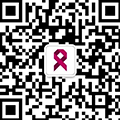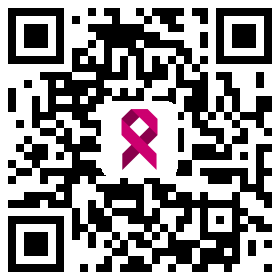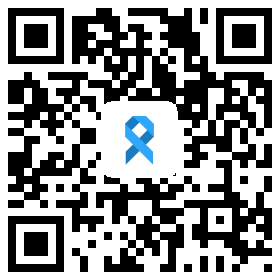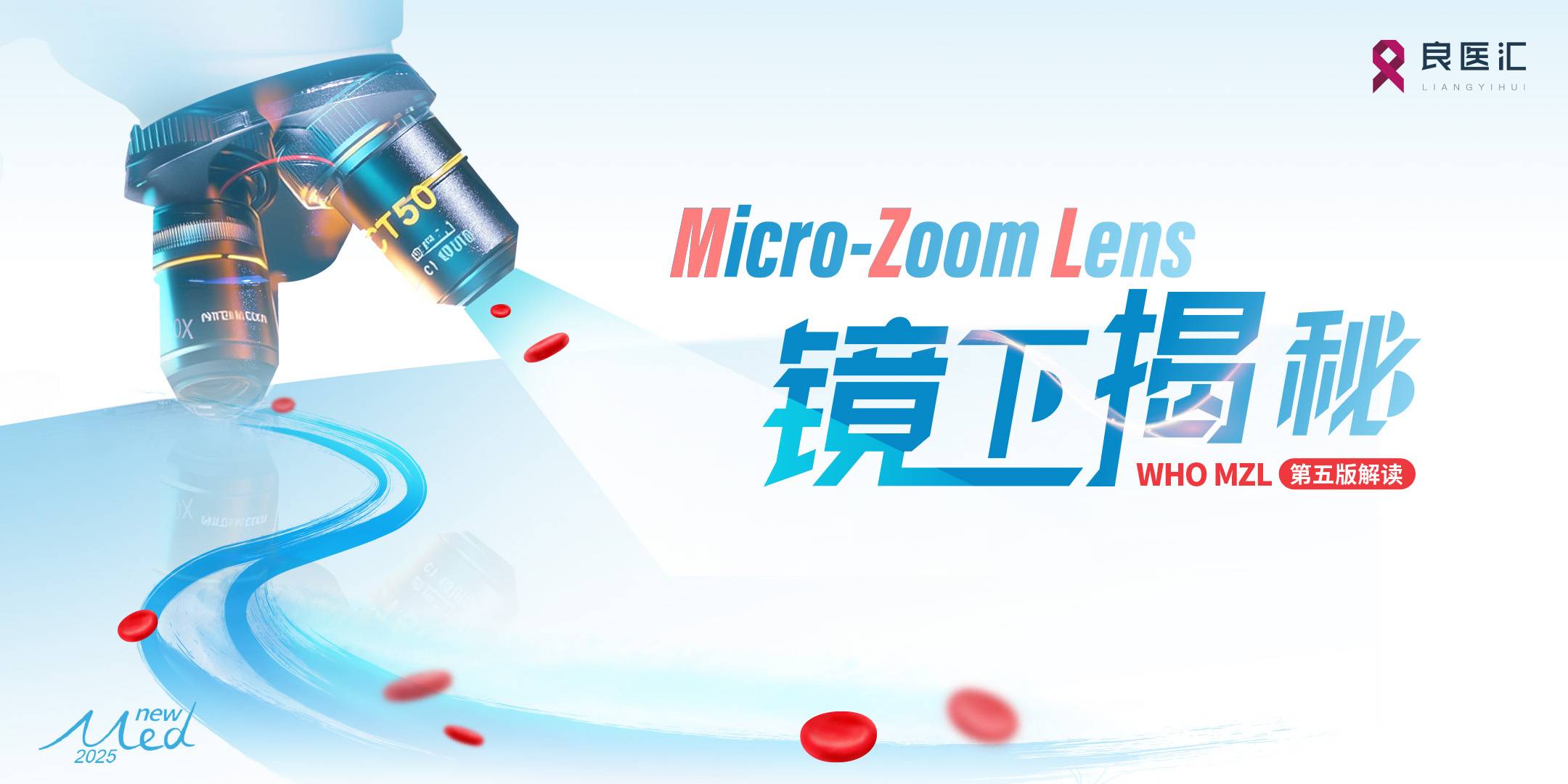主治医师 血液病学硕士
山东省老年医学学会老年肿瘤专业委员会委员
擅长造血干细胞移植和血液病重症患者的诊疗
急性髓系白血病(AML)是一种侵袭性的髓系前体细胞恶性肿瘤。中位发病年龄为68岁,约75%AML患者发病年龄为55~65岁。根据NCCN指南及ELN指南,将老年AML患者定义为60岁以上的患者。由于老年AML患者细胞遗传学及分子生物学不良因素多、前驱血液病(MDS/MPN等)和治疗相关AML的发生率较高,且老年患者体力状态较差,基础疾病多见,部分患者无法耐受强化疗,这些都与CR率、总生存率(OS)较低相关[1-4]。在过去几十年中,AML治疗方面的进展主要使年轻患者受益,而老年患者作为AML主要患者群体,其预后改善并不明显[5、6]。近些年,许多中心将改善老年AML患者预后作为主要的研究方向。
AML治疗方法主要分为强化化疗(IC)方案及非强化治疗方案。在选择AML患者的治疗方案时,需要综合考虑多种疾病相关因素和患者相关因素。患者对强化疗的耐受能力受患者年龄、伴发疾病、器官功能、基线状态和当前疾病状态的影响,其中年龄的影响最大,但不能作为固定且唯一的标准[7,8]。对于适合强化疗的患者,如伴发疾病少、器官功能良好的患者,依可以考虑将强化疗方案作为一线治疗。
一、适合IC的患者
目前还没有充分的数据表明哪种方案对老年AML患者最安全有效。传统的“7+3方案”是成人AML患者最常用的诱导方案。对于无不良合并症、无高危遗传学异常、一般情况良好的老年患者,标准“7+3方案”仍然可以作为这类老年患者的首选[9,10]。Lowenberg等的研究显示,在“7+3方案”中,增加蒽环类药物的剂量,虽然CR率显著提高,但并没有转化为生存获益[11]。“7+3方案”潜在的毒性限制了其在老年患者中的应用,与新药联合的改良强化治疗方案因此产生。
一项维奈克拉联合5+2化疗治疗老年AML的Ib期剂量爬坡试验中,CR/CRi率为97%,中位OS为31.3个月;30天死亡率为6%,表明了该方案在老年AML患者中的安全性及有效性[12]。一项III期随机对照试验将新药强化方案CPX-351(脂质体柔红霉素+阿糖胞苷)与传统7+3方案进行了比较[13],患者中位年龄68岁,与7+3组相比,CPX-351组的CR率和OS均得到改善(2年OS分别为31.1%和12.3%),且不良事件无明显差异。FLT3突变在老年患者中较为常见,FLT3抑制剂(FLT3i)包括一代的索拉非尼、米哚妥林及二代的吉瑞替尼、奎扎替尼等。在历时10年的RATIFY研究中,与单独使用7+3患者相比,在7+3方案中加入FLT3i米哚妥林可改善OS,且安全性良好[14]。尽管该研究纳入患者为60岁以下成人患者,FDA仍然批准其作为初诊FLT3突变AML成年患者与化疗联合使用,并没有设置年龄上限。Gautam Borthakur等在对162例CBF-AML患者进行的非随机分析中,将FLAG-GO(吉妥珠单抗)方案推广至成人各年龄患者,包括65岁以上的患者,证实其具有很高的疗效,在6.5年的中位随访中,FLAG-GO的5年RFS为87%,而FLAG-Ida的5年RFS为68%,因此推荐该方案作为耐受IC的CBF-AML患者的首选方案[15、16]。与传统强化治疗方案相比,新药的引入降低了化疗风险同时提高老年AML患者的疗效,可作为耐受IC老年AML患者的一线治疗选择。
减低强度预处理方案(RIC)的引入使异基因造血细胞移植(allo-HCT)在老年急性髓系白血病(AML)患者中成为可能[17],抗感染和移植物抗宿主病(GVHD)预防措施的改善,老年AML患者行异基因造血干细胞移植(allo-HSCT)的安全性有了明显提高[18、19]。如果诱导治疗获得CR,有不良预后因素且适合allo-HSCT的老年患者应继续进行allo-HSCT。
对于不适合进行allo-HSCT的老年AML患者,维持治疗是改善预后的选择之一。其中阿扎胞苷片剂(CC-486)是FDA批准的第一个用于缓解期AML患者维持治疗的新药。在国际QUAZARAML-001III期临床研究中,472名新诊断AML患者,中位年龄68岁,强化治疗获得CR/CRi但不适合行allo-HSCT,分别给予安慰剂及CC-486维持治疗。中位随访41.2个月,CC-486组的OS较安慰剂组明显改善(中位OS为24.7个月vs14.8个月;2年OS率50.6% vs 37.1%),且CC-486耐受良好[20]。对于没有进行巩固治疗或巩固治疗1-2个周期的患者,使用CC-486维持治疗均获益,但对于已进行3个周期巩固治疗的患者,CC-486组和安慰剂组2年OS无差异。这提示如果患者不能耐受连续多次的中大剂量Ara-C巩固化疗,适当的维持治疗仍可获益;相反,如果患者已经进行较为充分的巩固治疗,维持治疗不是必然选择。
二、 不适合IC的患者
对于不适合IC的老年患者,羟基脲或小剂量阿糖胞苷(LDAC)曾被作为不适合IC的AML患者的姑息性化疗方案。去甲基化药物(HMA)阿扎胞苷(AZA)和地西他滨延长了老年AML患者生存期[21-23],已经成为老年患者的标准治疗方案之一。随着白血病发生的分子和细胞驱动因素研究的深入,老年AML患者有了新的治疗选择。将传统方案与新药联合的新型治疗方案不断被证实。
AML细胞的生存高度依赖于抗凋亡蛋白BCL-2家族蛋白,维奈克拉(VEN)是BCL-2的抑制剂 [24]。在一项关键性的Ib期研究中[25],评估了VEN+HMA(阿扎胞苷或地西他滨)在中位年龄为74岁、不适合IC的AML患者中的疗效及安全性,CR+CRi率为67%,mOS为17.5个月,维奈克拉400mg+HMA队列的CR+CRi率为73%,mOS未达到。该研究显示维奈克拉+HMA对老年AML患者有效且耐受性良好。随后的随机III期VIALE-A试验对不适合IC的AML患者分别给予了AZA单药或AZA/VEN治疗。两组OS分别为9.6个月和14.7个月,CR/CRi率分别为28.3%和66.4%,而FLT3突变的患者对AZA/VEN的CR率更是达到了72.4%[26]。在VIALE-C研究中,在LDAC基础上增加维奈克拉组成的LDAC/VEN方案使老年AML患者中位OS从4.1个月延长至8.4个月(p=0.04)[27];在另一项研究中,LDAC与Hedgehog通路抑制剂格拉吉布的联合使中位OS从4.3个月延长至8.3个月(p=0.01)[28]。GO曾因早期死亡率较高中断研究,但在AML-19研究中[29],显示了优于最佳支持治疗的生存获益,这使得GO重新进入视野。GO与HMA联合方案的研究也在探索中[30]。
老年AML患者中分子生物学异常多见,相应的靶向药物也为老年患者提供了新的治疗途径。HMA与FLT3i的二联方案和HMA/VEN+FLT3i的三联方案用于初治FLT3突变AML患者的多项研究正在进行中 [24、31-34]。2020年ASH会议上口头汇报了来自国际多中心合作的NCT02752035研究,对不能耐受高强度化疗的新诊断FLT3突变急性髓系白血病(AML)患者应用吉瑞替尼联合阿扎胞苷或阿扎胞苷单药进行了开放标签Ⅲ期随机临床试验,吉瑞替尼80~120mg联合AZA队列中数据显示CR率为67%。IDH突变在老年患者中较常见。过去,IDH突变AML的非强化治疗是HMA单药。艾伏尼布和恩西地平分别是IDH1和IDH2抑制剂。NCCN建议将艾伏尼布和恩西地平患者中分别用于新诊断IDH1和IDH2突变AML患者。Roboz团队[35]及Daniel团队[36]分别评估了艾伏尼布和恩西地平单药在初治老年IDH1/IDH2突变AML患者中有效性和安全性,mOS分别为12.6个月和11.3个月,且耐受性良好。与HMA联合的研究也在进行中。ivosidenib+AZA治疗IDH1突变AML的Ib期结果证明了其安全性和有效性,CR率为60.9%,ORR为78.3%,1年OS为82%[37]。在另一项II期研究中期分析中,与AZA单药治疗IDH2突变AML患者相比,Enasidenib±AZA方案治疗的患者ORR及CR率均显著改善[38]。
TP53在MDS/AML患者中发生率约5-10%,此类患者化疗反应差,CR持续时间缩短,尤其是老年患者预后更差。一项Ib/II期研究对Eprenetapopt (APR-246)的安全性、有效性及推荐剂量进行了探索,入组的11例TP53突变AML患者给予AZA+APR-246治疗,总有效率为64%,CR为36%[39]。Thomas Cluzeau等的研究中[40],AZA+APR-246治疗TP53突变AML,ORR为33%,其中CR为17%。Magrolimab (Hu5F9-G4)是抗CD47单克隆抗体,AZA+Hu5F9-G4治疗新诊断不适合IC的AML患者的Ib期试验研究(NCT03248479)正在进行。在最近一次分析中,可评估的21例TP53突变患者中,CR/CRi率为67%,mOS为12.9个月。值得注意的是,没有免疫相关的不良事件,最常见的治疗相关不良事件是贫血(31%)[41]。由于上述研究病例数较少,还需要进一步研究。
三、总结
在老龄化人口过程中,AML患病率逐渐上升。老年AML因疾病因素与患者因素的复杂性,治疗面临巨大挑战。近几年,该领域取得了巨大进展,新药层出不穷。通过分析目前的治疗进展,我们可以看到,单一药物治疗往往不能使患者获得良好的治疗效果,新药与传统药物组成的联合方案,利用多种机制协同作用,可能使患者更加获益。综上所述,老年AML患者预后的改善,不但依赖于新药的研发,也需要临床医生对新的治疗方案的探索,这将会成为我们研究的方向之一。
[1] Herold Tobias, Rothenberg-Thurley Maja, Grunwald Victoria V, et al. Validation and refinement of the revised 2017 European LeukemiaNet genetic risk stratification of acute myeloid leukemia[J]. Leukemia, 2020;34(12):3161-72.
[2] Juliusson Gunnar, Lazarevic Vladimir, Hörstedt Ann-Sofi, et al. Acute myeloid leukemia in the real world: why population-based registries are needed[J]. Blood, 2012;119(17):3890-9.
[3] Kantarjian Hagop, Ravandi Farhad, O’Brien Susan, et al. Intensive chemotherapy does not benefit most older patients (age 70 years or older) with acute myeloid leukemia[J]. Blood, 2010;116(22):4422-9.
[4] Tsai C-H, Hou H-A, Tang J-L, et al. Genetic alterations and their clinical implications in older patients with acute myeloid leukemia[J]. Leukemia, 2016;30(7):1485-92.
[5] Appelbaum Frederick R, Gundacker Holly, Head David R, et al. Age and acute myeloid leukemia[J]. Blood, 2006;107(9):3481-5.
[6] Hills Robert K, Burnett Alan K. Applicability of a “Pick a Winner” trial design to acute myeloid leukemia[J]. Blood, 2011;118(9):2389-94.
[7] Ferrara F, Barosi G, Venditti A, et al. Consensus-based definition of unfitness to intensive and non-intensive chemotherapy in acute myeloid leukemia: a project of SIE, SIES and GITMO group on a new tool for therapy decision making[J]. Leukemia, 2013;27(5):997-9.
[8] Ustun C, Lazarus H M, Weisdorf D. To transplant or not: a dilemma for treatment of elderly AML patients in the twenty-first century. Bone Marrow Transplant, 2013;48(12):1497-505.
[9] Luger Selina M. Acute myeloid leukemia: How to treat the fit patient over age 75? [J]. Best Practice & Research Clinical Haematology, 2019;32(4):101-105.
[10] Chen Yi, Yang Ting, Zheng Xiaoyun, et al. The outcome and prognostic factors of 248 elderly patients with acute myeloid leukemia treated with standard-dose or low-intensity induction therapy[J]. Medicine, 2016;95(30):e4182.
[11] Löwenberg Bob, Ossenkoppele Gert J, van Putten Wim, et al. High-Dose Daunorubicin in Older Patients with Acute Myeloid Leukemia[J]. N Engl J Med, 2009;361(13):1235-48.
[12] Chua Chong Chyn, Roberts Andrew W, Reynolds John, et al. Chemotherapy and Venetoclax in Elderly Acute Myeloid Leukemia Trial (CAVEAT): A Phase Ib Dose-Escalation Study of Venetoclax Combined With Modified Intensive Chemotherapy[J]. JCO, 2020;38(30):3506-17.
[13] Lancet Jeffrey E, Uy Geoffrey L, Cortes Jorge E, et al. CPX-351 (cytarabine and daunorubicin) Liposome for Injection Versus Conventional Cytarabine Plus Daunorubicin in Older Patients With Newly Diagnosed Secondary Acute Myeloid Leukemia[J]. JCO, 2018;36(26):2684-92.
[14] Stone Richard M, Mandrekar Sumithra J, Sanford Ben L, et al. Midostaurin plus Chemotherapy for Acute Myeloid Leukemia with a FLT3 Mutation[J]. N Engl J Med, 2017;377(5):454-64.
[15] Borthakur Gautam, Cortes Jorge E, Estey Elihu E, et al. Gemtuzumab ozogamicin with fludarabine, cytarabine, and granulocyte colony stimulating factor (FLAG-GO) as front-line regimen in patients with core binding factor acute myelogenous leukemia: FLAG-GO in Patients with CBF AML[J]. Am J Hematol, 2014;89(10):964-8.
[16] Borthakur GM, Cortes JE, Estey EE. Fludarabine,cytarabine, G-CSF and gemtuzumab ozogamicin(FLAG-GO) regimen results in better molecular response and relapse-free survival in core binding factor acute myeloid leukemia than FLAG and Idarubicin(FLAG-Ida) [J]. Blood, 2019;134:290.
[17] Fukuoka Blood and Marrow Transplantation Group, Yamasaki Satoshi, Yoshimoto Goichi, Ogawa Ryosuke, et al. Factors prognostic of eligibility for allogeneic HCT among older patients with AML-CR1 and adverse- or intermediate-risk cytogenetics[J]. Ann Hematol, 2015;94(7):1159-65.
[18] Ciurea Stefan O, Kongtim Piyanuch, Varma Ankur, et al. Is there an optimal conditioning for older patients with AML receiving allogeneic hematopoietic cell transplantation? [J]. Blood, 2020;135(6):449-52.
[19] Lipof Jodi, Loh Kah, O’Dwyer Kristen,et al. Allogeneic Hematopoietic Cell Transplantation for Older Adults with Acute Myeloid Leukemia[J]. Cancers, 2018;10(6):179.
[20] Wei Andrew H, Döhner Hartmut, Pocock Christopher, et al. Oral Azacitidine Maintenance Therapy for Acute Myeloid Leukemia in First Remission[J]. N Engl J Med, 2020;383(26):2526-37.
[21] Kantarjian Hagop M, Thomas Xavier G, Dmoszynska Anna, et al. Multicenter, Randomized, Open-Label, Phase III Trial of Decitabine Versus Patient Choice, With Physician Advice, of Either Supportive Care or Low-Dose Cytarabine for the Treatment of Older Patients With Newly Diagnosed Acute Myeloid Leukemia[J]. JCO, 2012;30(21):2670-7.
[22] Dombret Hervé, Seymour John F, Butrym Aleksandra, et al. International phase 3 study of azacitidine vs conventional care regimens in older patients with newly diagnosed AML with >30% blasts[J]. Blood, 2015;126(3):291–9.
[23] Fenaux Pierre, Mufti Ghulam J, Hellström-Lindberg Eva, et al. Azacitidine Prolongs Overall Survival Compared With Conventional Care Regimens in Elderly Patients With Low Bone Marrow Blast Count Acute Myeloid Leukemia[J]. JCO, 2010;28(4):562-9.
[24] Pan Rongqing, Hogdal Leah J, Benito Juliana M, et al. Selective BCL-2 Inhibition by ABT-199 Causes On-Target Cell Death in Acute Myeloid Leukemia[J]. Cancer Discovery, 2014;4(3):362-75.
[25] DiNardo Courtney D, Pratz Keith, Pullarkat Vinod, et al. Venetoclax combined with decitabine or azacitidine in treatment-naive, elderly patients with acute myeloid leukemia[J]. Blood, 2019;133(1):7-17.
[26] DiNardo Courtney D, Jonas Brian A, Pullarkat Vinod, et al. Azacitidine and Venetoclax in Previously Untreated Acute Myeloid Leukemia[J]. N Engl J Med, 2020;383(7):617-29.
[27] Wei AH, Montesinos P, Ivanov V, et al. Venetoclax plus LDAC for patients with untreated AML ineligible for intensive chemotherapy: phase 3 randomized placebo-controlled trial[J]. Blood, 2020.135(24):2137-45.
[28] Cortes Jorge E, Heidel Florian H, Hellmann Andrzej, et al. Randomized comparison of low dose cytarabine with or without glasdegib in patients with newly diagnosed acute myeloid leukemia or high-risk myelodysplastic syndrome[J]. Leukemia, 2019;33(2):379-89.
[29] Amadori Sergio, Suciu Stefan, Selleslag Dominik, et al. Gemtuzumab Ozogamicin Versus Best Supportive Care in Older Patients With Newly Diagnosed Acute Myeloid Leukemia Unsuitable for Intensive Chemotherapy: Results of the Randomized Phase III EORTC-GIMEMA AML-19 Trial[J]. JCO, 2016;34(9):972-9.
[30] Nand Sucha, Othus Megan, Godwin John E, et al. A phase 2 trial of azacitidine and gemtuzumab ozogamicin therapy in older patients with acute myeloid leukemia[J]. Blood, 2013;122(20):3432-9.
[31] Ohanian Maro, Garcia-Manero Guillermo, Levis Mark, et al. Sorafenib Combined with 5-azacytidine in Older Patients with Untreated FLT3-ITD Mutated Acute Myeloid Leukemia:(AML)[J]. Am J Hematol, 2018;93(9):1136-41.
[32] Wang ES, Montesinos P, Minden M. Phase 3, multicenter, open-label study of gilteritinib, gilteritinib plus azacitidine, or azacitidine alone in newly diagnosed FLT3 mutated (FLT3mut+) acute myeloid leukemia (AML) patients ineligible for intensive induction chemotherapy[R]. The Annual Meeting of the American Society of Hematology 5 December 2020.
[33] Maiti Abhishek, DiNardo Courtney D, Daver Naval G, et al. Triplet therapy with venetoclax, FLT3 inhibitor and decitabine for FLT3-mutated acute myeloid leukemia[J]. Blood Cancer J, 2021;11(2):25.
[34] Raghuveer Singh Mali, Qi Zhang, RosaAnna DeFilippis, et al. Venetoclax combines synergistically with FLT3 inhibition to effectively target leukemic cells in FLT3-ITD+ acute myeloid leukemia models[J]. Haematol, 2020;106(4):1034–46.
[35] Roboz Gail J, DiNardo Courtney D, Stein Eytan M, et al. Ivosidenib induces deep durable remissions in patients with newly diagnosed IDH1-mutant acute myeloid leukemia[J]. Blood, 2020;135(7):463-71.
[36] Pollyea Daniel A, Tallman Martin S, de Botton Stéphane, et al. Enasidenib, an inhibitor of mutant IDH2 proteins, induces durable remissions in older patients with newly diagnosed acute myeloid leukemia[J]. Leukemia, 2019;33(11):2575-84.
[37] DiNardo Courtney D, Stein Anthony S, Stein Eytan M, et al. Mutant Isocitrate Dehydrogenase 1 Inhibitor Ivosidenib in Combination With Azacitidine for Newly Diagnosed Acute Myeloid Leukemia[J]. JCO, 2021;39(1):57-65.
[38] DiNardo CD, Schuh AC, Stein EM, et al. Effect of enasidenib (ENA) plus azacitidine (AZA) on complete remission and overall response versus AZA monotherapy in mutant -IDH2 (mIDH2) newly diagnosed acute myeloid leukemia (ND-AML) [J]. J Clin Oncol, 2020;38(15_suppl):7501.
[39] Sallman David A, DeZern Amy E, Garcia-Manero Guillermo, et al. Eprenetapopt (APR-246) and Azacitidine in TP53-Mutant Myelodysplastic Syndromes[J]. JCO, 2021;39(14):1584-94.
[40] Cluzeau Thomas, Sebert Marie, Rahmé Ramy. Eprenetapopt Plus Azacitidine in TP53 -Mutated Myelodysplastic Syndromes and Acute Myeloid Leukemia: A Phase II Study by the Groupe Francophone des Myélodysplasies (GFM) [J]. JCO, 2021;39(14):1575-83.
[41] DA Sallman, AS Asch, S Kambhampati, et al. The firstin-class Anti-CD47 antibody magrolimab combined with azacitidine is well-tolerated and effective in AML patients: phase 1b results[J]. Blood, 2020;15:7507.












 苏公网安备32059002004080号
苏公网安备32059002004080号


